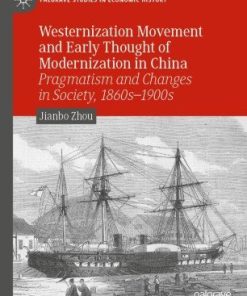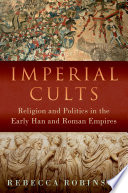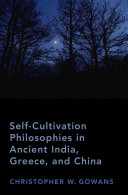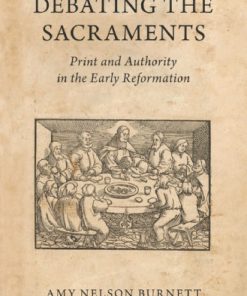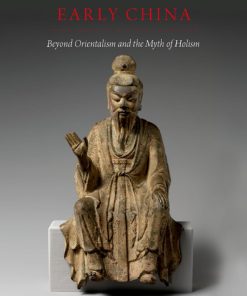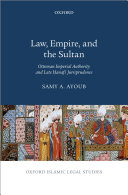(Ebook PDF)Heavenly Numbers Astronomy and Authority in Early Imperial China 1st edition by Christopher Cullen 0191047546 9780191047541 full chapters
$50.00 Original price was: $50.00.$25.00Current price is: $25.00.
Heavenly Numbers: Astronomy and Authority in Early Imperial China 1st edition by Christopher Cullen – Ebook PDF Instant Download/DeliveryISBN: 0191047546, 9780191047541
Full dowload Heavenly Numbers: Astronomy and Authority in Early Imperial China 1st edition after payment.
Product details:
ISBN-10 : 9780191047541
ISBN-13 : 9780191047541
Author: Christopher Cullen 9780191047541
This book is a history of the development of mathematical astronomy in China, from the late third century BCE, to the early 3rd century CE – a period often referred to as ‘early imperial China’. It narrates the changes in ways of understanding the movements of the heavens and the heavenly bodies that took place during those four and a half centuries, and tells the stories of the institutions and individuals involved in those changes. It gives clear explanations of technical practice in observation, instrumentation, and calculation, and the steady accumulation of data over many years – but it centres on the activity of the individual human beings who observed the heavens, recorded what they saw, and made calculations to analyse and eventually make predictions about the motions of the celestial bodies. It is these individuals, their observations, their calculations, and the words they left to us that provide the narrative thread that runs through this work. Throughout the book, the author gives clear translations of original material that allow the reader direct access to what the people in this book said about themselves and what they tried to do.
Heavenly Numbers: Astronomy and Authority in Early Imperial China 1st Table of contents:
1. The astronomical empire
1.1 Building astronomy into the foundations
1.2 Delivering the seasons—how ‘respectfully’?
1.3 ‘Completing the year’: running a luni-solar calendar in the second century bce
1.4 The origin of ‘quarter remainder’ values
1.5 Records of astronomical systems under the early empire
2. Li in everyday life: dates and calendars
2.1 Looking at a date
2.1.1 Lunar phases
2.1.2 Years and reign titles
2.1.3 Days—sexagenary and Julian
2.2 Calendars in early imperial China: from the ground up
2.2.1 Looking at a calendar
2.2.1.1 Month and year lengths
2.2.1.2 Marking the seasons
2.2.1.3 Hemerological markings
2.2.2 How people used calendars
3. The Emperor’s Grand Inception, and the defeat of the Grand Clerk
3.1 The emperor’s winter journey
3.2 An emperor in search of immortality
3.2.1 Empire and cosmos at the founding of the Han
3.2.2 Wudi: empire and emperor in a new cosmic order
3.2.3 The Yellow Emperor intervenes
3.3 The outcome of it all: the events of 105–104 bce and their aftermath
3.3.1 The Grand Clerk’s account
3.3.2 The account in the Han shu
3.3.3 The justification of the new system
3.3.4 The adoption of the new system
3.4 The affair of 78 bce
3.4.1 The question of the ‘six systems’
3.4.2 Identifying the Qin and Han systems: textual evidence
3.4.3 Was there any system in Qin and early Han?
4. The Triple Concordance system and Liu Xin’s ‘Grand Unified Theory’
4.1 The historical background of Liu Xin’s work
4.2 A new astronomical system? Facing the problem of the planets
4.3 Numbers and a theory of everything
4.4 The structure of the Triple Concordance system
4.4.1 Concordance constants, tong mu 統母28
4.4.2 Deriving the constants of an astronomical system
4.4.3 Sequence constants, ji mu 紀母
4.4.4 The Five Pacers, wu bu 五步
4.4.5 Concordance workings, tong shu 統術
4.4.5.1 Initial conditions, Origins and Concordances
4.4.5.2 Predicting months and solar cycles
4.4.5.3 Month numbers and intercalations
4.4.5.4 Lunar eclipse prediction
4.4.6 Sequence workings, ji shu 紀術
4.5 Testing the system? The Canon of the Ages, Shi jing 世經
5. The measures and forms of heaven
5.1 Prologue: modern measures for the stars
5.2 Huan Tan: the Gentleman with the clepsydra
5.2.1 Listing the lodges
5.3 What was the use of the lodge system?
5.4 How could Huan Tan have found the ‘correct du’ of lodges?
5.4.1 Reconstructing Huan Tan’s measurements
5.5 Locating the sun among the lodges, and the shape of the heavens
5.6 From model to cosmos: the Zhou bi 周髀
5.6.1 The size and shape of the gai tian 蓋天 cosmos
5.6.2 The strange case of the north polar distances
5.7 Changing measurements, instruments, and pictures of the cosmos
5.8 Huan Tan criticizes the gai tian, and Yang Xiong adopts the hun tian
6. Restoration and re-creation in the Eastern Han
6.1 Adopting a new astronomical system: from the Triple Concordance to the Han Quarter Remainder
6.2 The Han Quarter Remainder system and its observational basis
6.2.1 Choosing a new system origin
6.2.2 The origin of the Han Quarter Remainder system’s constants
6.3 The work of Jia Kui
6.3.1 The significance of a physical explanation of eclipses in relation to astronomical systems
6.3.2 Jia Kui and the importance of the ecliptic in observation and calculation
6.3.3 The normalization of armillary instruments, and their projection back into the past
6.3.4 Jia Kui and the measures of the celestial sphere
6.3.5 Jia Kui and the speed of the moon: the Nine Roads
6.3.5.1 The moon in motion: its path and speed
6.3.5.2 The Nine Roads before Jia Kui
6.3.5.3 Jia Kui on the moon
6.4 The solar tables of Huo Rong: fitting it all together (but not quite …)
6.4.1 The structure of the table
6.4.2 The observational basis of the table
6.4.3 Calculated quantities
6.4.4 Advances and retardations
6.5 Zhang Heng: a reputation, its origins, and its consequences
6.5.1 The nature and size of heaven and earth, and of the heavenly bodies
6.5.2 Constructing and using instruments
6.5.3 The celestial sphere: solving the problem of ecliptic and equatorial motion
7. The age of debates
7.1 Whose voices were heard? Two outsiders
7.1.1 The case of Lang Yi
7.1.2 The case of Xiang Kai
7.2 The debates
7.2.1 Styles and records of argument in ancient western and eastern Eurasia
7.2.2 The institution of the yi and the background of controversy
7.2.3 Cai Yong and the debate of 175 ce
7.2.4 The heavens as a locus of controversy: issues and resources for debate
8. Liu Hong and the conquest of the moon
8.1 The work of Liu Hong
8.1.1 Liu Hong as trusted consultant—and the case of an expert commoner
8.1.2 The Uranic Manifestation system
8.2 Modelling the motions of the moon
8.2.1 Liu Hong’s speed sequence
8.2.2 Lunar latitude
8.3 Solar eclipses as predictable portents
8.3.1 Eclipses and eclipse limits
8.3.2 Testing the prediction system
8.3.3 Liu Hong’s solar eclipse prediction
8.3.4 After Liu Hong
9. Epilogue
People also search for Heavenly Numbers: Astronomy and Authority in Early Imperial China 1st:
astronomy numbers meaning
a heavenly body that circles the sun
astronomical numbers meaning
astronomical numbers examples
bright heavenly body visible at night
You may also like…
History - Asian History
Politics & Philosophy - Anthropology
Graphic Signs of Authority in Late Antiquity and the Early Middle Ages Ildar Garipzanov
Religion & Spirituality
Imperial Cults: Religion and Politics in the and Roman Empires Robinson
Politics & Philosophy - Ancient & Medieval Philosophy
Self-Cultivation Philosophies in Ancient India, Greece, and China 1st Edition Christopher W. Gowans
History - Asian History
History - World History
Politics & Philosophy - Asian Philosophy
Uncategorized
Law, Empire, and the Sultan: Ottoman Imperial Authority and Late Hanafi Jurisprudence 1st Edition




